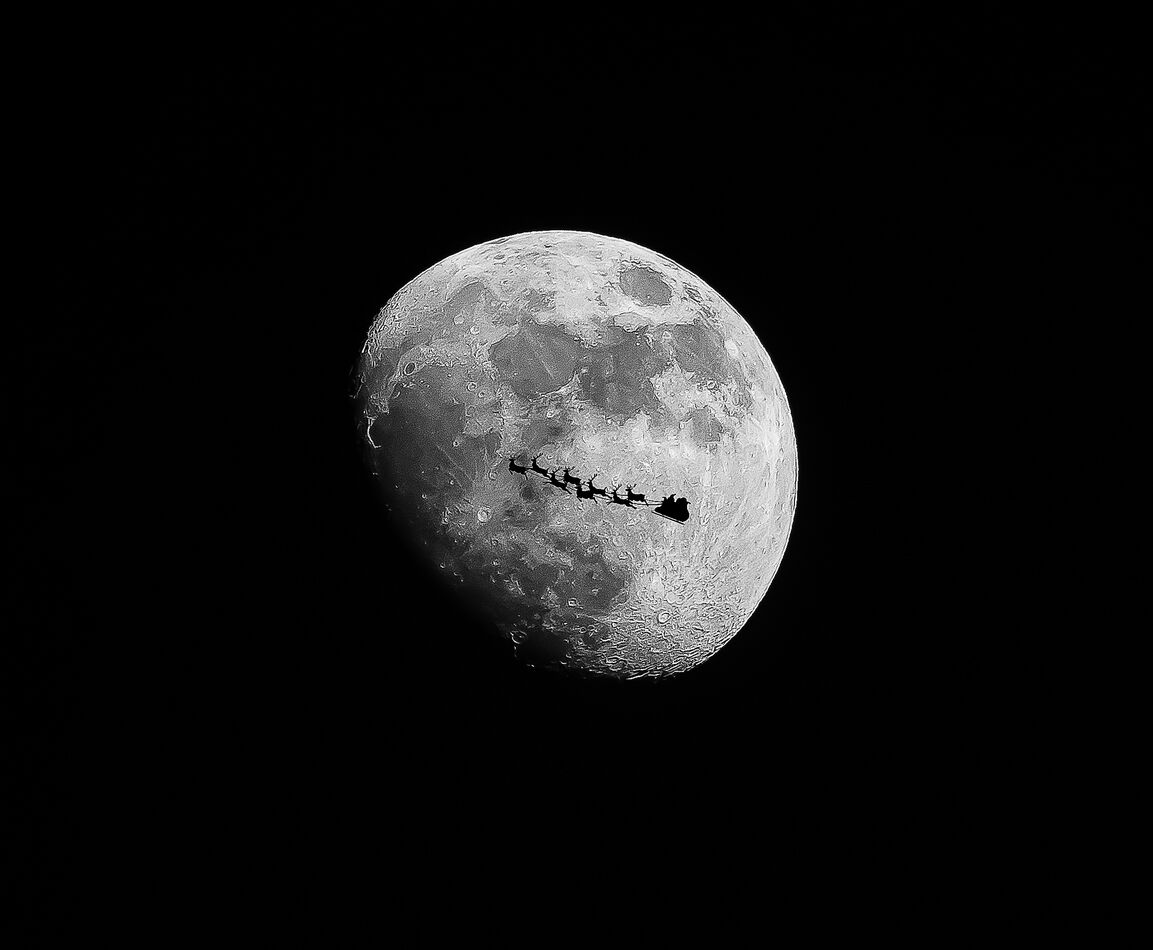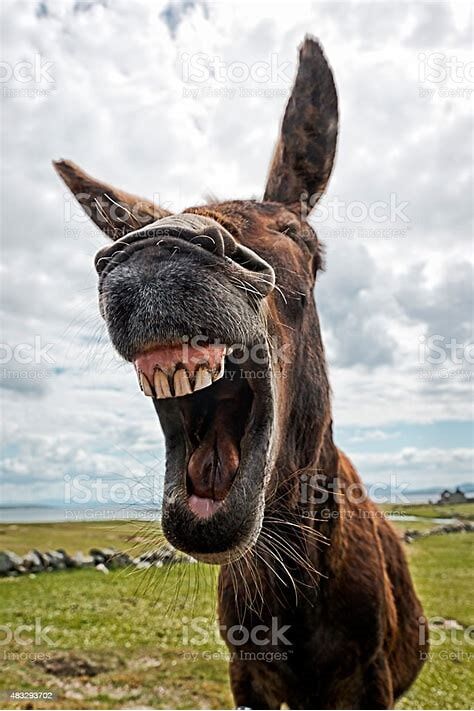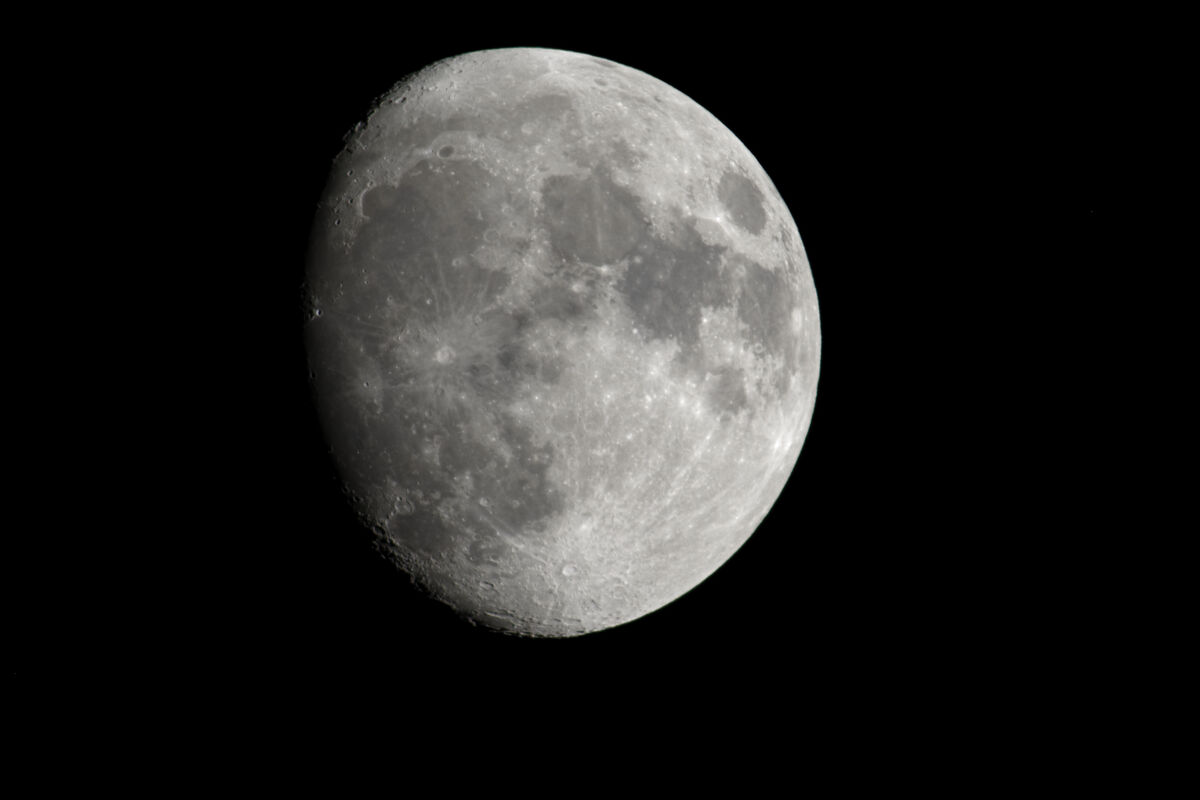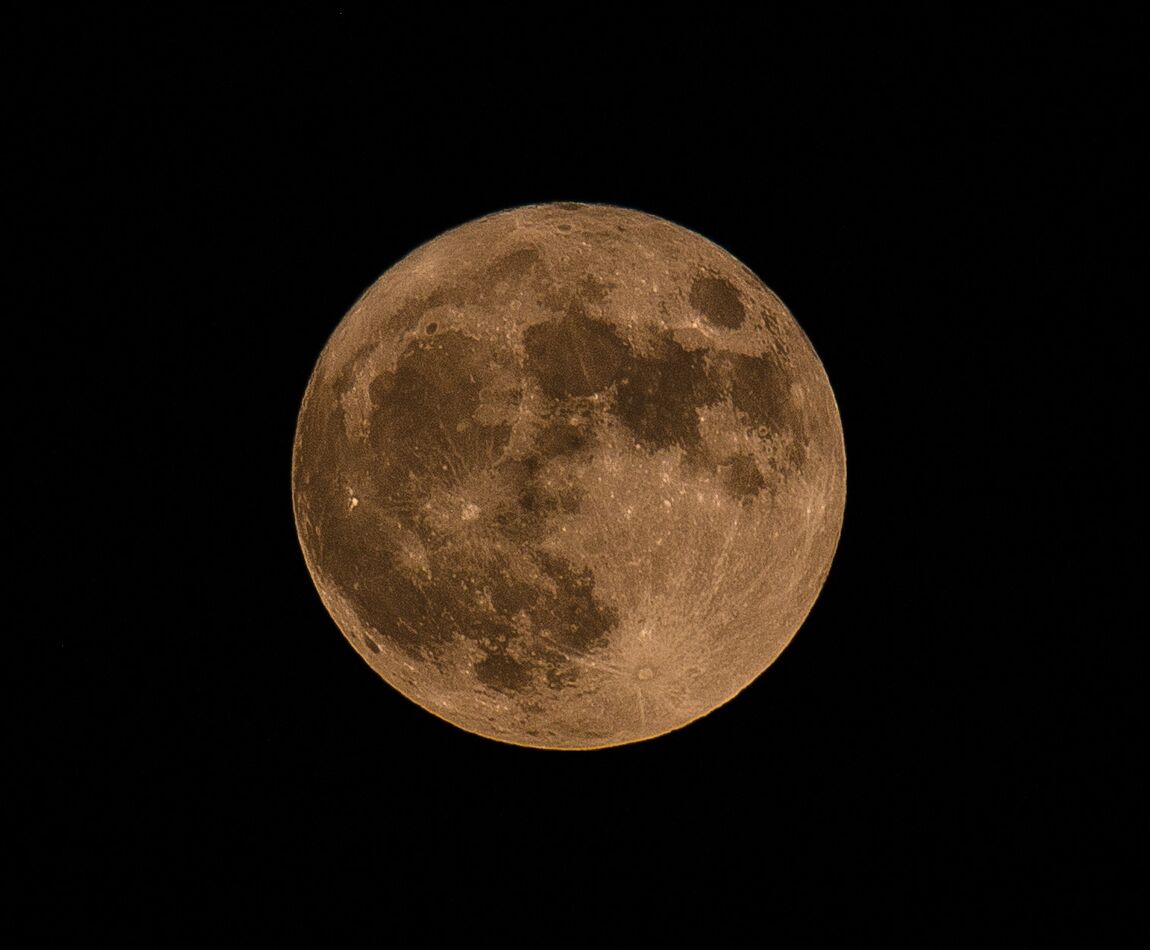Moon Shots
Sep 4, 2023 18:33:01 #
texasdigital wrote:
I had an interesting experience, photographing the... (show quote)
Without seeing a sample of the photos it is difficult to give an opinion, but to me it seems like a focus problem. It is completely different to focus with a 200mm lens than it is with a 500mm lens. In your case I would try it with all focus points. Remember if you focus over the moon the automatic focus will be crazy because it needs a contrast zone like the edge.
Sep 4, 2023 19:22:17 #
texasdigital wrote:
I had an interesting experience, photographing the... (show quote)
Kinda puzzling why you would be metering a moon shot. The moon will be back, time and again, at the same brightness, and you can just set an appropriate exposure, check the playback, adjust if necessary, and not worry any further about the recent episode.
Sep 4, 2023 20:31:09 #
Sidwalkastronomy
Loc: New Jersey Shore
Did your lens get fog/condensation on it. On telescopes we use dew heaters to keep moisture off the front. A hair dryer on cold might work too
Sep 5, 2023 02:50:54 #
druthven wrote:
I absolutely love this shot. If not the best, certainly one of the finest moon alone shots I have ever seen. Great composition. An ice blue moon indeed. It grabbed me from the moment I saw it. Wow!!
Ice blue. Now THAT hits tge funny bone !
Sep 5, 2023 13:12:06 #
kb6kgx
Loc: Simi Valley, CA
taylorzacre wrote:
Years ago, 1971 to be exact, a professor I had in college, teaching photography taught that the moon is reflected sun light and exposure is the same as bright sunlight!
Yes, that's the key. After 40 years of trying to get Moon photos, I finally figured that part out! Yes, expose for daylight!
Sep 5, 2023 14:05:01 #
A few things come to mind that might help.
First and foremost, look up photopills.com to get inside deep info on photographing all things in the sky.
But secondarily
Atmosphere means a lot. A hot muggy day/night in Texas (when is it not hot and muggy...this from a part time resident of Houston). Having a cool crisp night helps a lot. If its warm, the air will make it difficult to shoot through.
You need a steady camera and lens. The attached, however, was shot hand-held using a door frame as a brace.
This is where people will want to argue, but in my case, having a mirror-less where I could see the exposure that I was getting helped me a lot. The moon is very bright so you need to stop the camera down. I used spot metering but then reduced exposure from there. Of course, any camera will work..and certainly your camera. You just have to be aware that the moon is quite bright.
Bracket shots because exposure is difficult.
I shot with a long telephoto lens. Something like 600 mm equivalent.
Some post processing helps a lot as well...so shooting in RAW helped me with a wider latitude of editing.
I was lucky enough to capture a ufo on this moon photo as well.
Bottom line, shooting in the higher humidity warm may be difficult...see what they say on photopills
First and foremost, look up photopills.com to get inside deep info on photographing all things in the sky.
But secondarily
Atmosphere means a lot. A hot muggy day/night in Texas (when is it not hot and muggy...this from a part time resident of Houston). Having a cool crisp night helps a lot. If its warm, the air will make it difficult to shoot through.
You need a steady camera and lens. The attached, however, was shot hand-held using a door frame as a brace.
This is where people will want to argue, but in my case, having a mirror-less where I could see the exposure that I was getting helped me a lot. The moon is very bright so you need to stop the camera down. I used spot metering but then reduced exposure from there. Of course, any camera will work..and certainly your camera. You just have to be aware that the moon is quite bright.
Bracket shots because exposure is difficult.
I shot with a long telephoto lens. Something like 600 mm equivalent.
Some post processing helps a lot as well...so shooting in RAW helped me with a wider latitude of editing.
I was lucky enough to capture a ufo on this moon photo as well.
Bottom line, shooting in the higher humidity warm may be difficult...see what they say on photopills

Sep 5, 2023 15:23:17 #
Sep 5, 2023 18:08:37 #
AZpix wrote:
Here is another from last week.
Gorgeous, with great clarity 🥇🥇🥇🥇🥇 How did you ever get halfway there
 😋
😋 
Sep 5, 2023 18:11:48 #
Hip Coyote wrote:
A few things come to mind that might help. br br ... (show quote)
That delivery distance creates a lot of reindeer methane





Sep 5, 2023 20:00:48 #
Sep 5, 2023 20:16:59 #
User ID wrote:
Kinda puzzling why you would be metering a moon shot. The moon will be back, time and again, at the same brightness, and you can just set an appropriate exposure, check the playback, adjust if necessary, and not worry any further about the recent episode.
Perhaps I'm not using the correct nomenclature. I open live view, center the meter icon on the moon, and in the past (as well as this time), I adjust the shutter until detail appears. I fine-tuned it after that. With live view, there is no need to shoot, check, re-shoot. You can see the results immediately. I've not had any problems in the past, so obviously my technique was flawed, or perhaps my lens wasn't properly seated. If the contacts are not correctly aligned, communication with the camera body doesn't work. I haven't had the chance to re-shoot, but I intend to soon.
There are many photographers who advocate your system, but since the weight of the lens dictates tripod mounting for ultimate sharpness, there is no reason to not use live view. Also, I do appreciate the advice I am receiving, but I have been successful in shooting the moon in the past. I seemed to be having problems in this particular instance.
Sep 5, 2023 22:00:18 #
AZpix
Loc: Prescott,AZ
joecichjr wrote:
Gorgeous, with great clarity 🥇🥇🥇🥇🥇 How did you ever get halfway there  😋
😋 
 😋
😋 
Thanks. Nikon 600mm manual lens, TC-301 (2x) teleconverter, D7200. By my calculations this gets one to 1800mm. I prefer to do less than full moon as the craters at the terminator are quite striking and are washed out with a full moon.
Sep 6, 2023 08:41:09 #
Did moons many times , with a 800mm lens .iso 1000 , speed at 1/200 , f8 or 11 , that usually does it .
Sep 6, 2023 09:28:22 #
andiamo236 wrote:
Try underexposing the image. The moon is very bright. You should be able to go as slow as 1/125 second and ISO 100. Aperture of f11 is a good place to start. F8 may be as low as you can select as I have the same camera and lens. Image from 9/1/23 attached.
That is one beautiful photograph!
Sep 6, 2023 13:33:48 #
So a quick update. Well, as quick as an old geezer who likes to pontificate can accomplish. I went out last night with my 70-200mm with a 2X teleconverter. I shot off-hand, as my sole purpose was to work on the exposure.
I was able to get the exposure problem under control, so I may try the 200-500mm again, but on a tripod. I’m still having the eyeglass fogging problem, but I have some drops from my scuba diving days that will fix that.
I’m proud to live in Texas, and until I had a heat stroke years ago (another long but interesting story), I could tolerate the heat rather well. Now, being more advanced in age, I have to pick my battles more carefully, so I may need to schedule my moon shots in cooler months. Good thing the moon is predictable every month.
I have branched out into astrophotography, which has some enjoyable benefits, but unless I travel to a darker area, I am restricted by what some call light pollution. Also, I purchased a tracking mount which will help a lot, but from the few locations in my backyard suitable to set up, Polaris is blocked by my house. There is a workaround for this, and I am investigating.
Let me tell you though, even though I thought my gear load was light, packing what I need requires the use of my donkey. His former name was Hoosier Daddy, but after I got him, I changed it to Donkey Hotay. As you may know, donkeys are independent cusses, and he is no different.
I’ve had recent surgeries that limit my mobility, so I use Donkey Hotay to do the heavy lifting. He has a sense of humor, as the last time I set my gear up I was not able to make the connection between my tracking mount and laptop, and I must have looked quite the sight trying to coordinate all of the gear.
Sweat was pouring off of me, I was fighting mosquitoes, and frantically trying to get everything set up before I lost too much blood to stay consciousness, or melted like the wicked witch in The Wizard of Oz, having sweated all of my juices away. I’m sure I must have looked like a one-arm paper hanger in a windstorm. Donkey Hotay was laughing so hard, I think you call it braying, that he barely made it back to the house after I gave up.
Oh, a piece of advice when you are holding onto the tail of a donkey for support. Remember what end of the animal the tail is located at. Also, remember, Donkeys do have a sense of humor.
Clear skies everyone,
Larry from Texas
I was able to get the exposure problem under control, so I may try the 200-500mm again, but on a tripod. I’m still having the eyeglass fogging problem, but I have some drops from my scuba diving days that will fix that.
I’m proud to live in Texas, and until I had a heat stroke years ago (another long but interesting story), I could tolerate the heat rather well. Now, being more advanced in age, I have to pick my battles more carefully, so I may need to schedule my moon shots in cooler months. Good thing the moon is predictable every month.
I have branched out into astrophotography, which has some enjoyable benefits, but unless I travel to a darker area, I am restricted by what some call light pollution. Also, I purchased a tracking mount which will help a lot, but from the few locations in my backyard suitable to set up, Polaris is blocked by my house. There is a workaround for this, and I am investigating.
Let me tell you though, even though I thought my gear load was light, packing what I need requires the use of my donkey. His former name was Hoosier Daddy, but after I got him, I changed it to Donkey Hotay. As you may know, donkeys are independent cusses, and he is no different.
I’ve had recent surgeries that limit my mobility, so I use Donkey Hotay to do the heavy lifting. He has a sense of humor, as the last time I set my gear up I was not able to make the connection between my tracking mount and laptop, and I must have looked quite the sight trying to coordinate all of the gear.
Sweat was pouring off of me, I was fighting mosquitoes, and frantically trying to get everything set up before I lost too much blood to stay consciousness, or melted like the wicked witch in The Wizard of Oz, having sweated all of my juices away. I’m sure I must have looked like a one-arm paper hanger in a windstorm. Donkey Hotay was laughing so hard, I think you call it braying, that he barely made it back to the house after I gave up.
Oh, a piece of advice when you are holding onto the tail of a donkey for support. Remember what end of the animal the tail is located at. Also, remember, Donkeys do have a sense of humor.
Clear skies everyone,
Larry from Texas

If you want to reply, then register here. Registration is free and your account is created instantly, so you can post right away.







